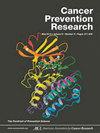构建和验证新型结直肠腺瘤风险预测提名图:从源头预防结直肠癌
IF 2.6
3区 医学
Q2 ONCOLOGY
引用次数: 0
摘要
大肠腺瘤是大多数大肠癌(CRC)的起源。早期发现并积极干预结直肠腺瘤对预防结直肠癌起着至关重要的作用。本研究旨在根据生活方式风险因素构建并验证一种新的大肠腺瘤风险预测提名图,该提名图可为预防 CRC 带来潜在益处。研究收集了 1133 名接受过完整结肠镜检查的受试者的结肠镜检查报告、病理报告、身体因素、家族史、个人病史、饮食和生活习惯。所有受试者被分为训练队列(792 人)和验证队列(341 人)。利用训练队列构建了预测结直肠腺瘤发病风险的提名图,并计算了 C 指数。在验证队列中验证了提名图的预测准确性和临床适用性。从高龄、男性、吸烟、饮酒、腌制咸菜和排便不规律等 18 个健康因素中选出 6 个具有统计学意义的变量构建了提名图。训练队列的 C 指数为 0.778,验证队列的 C 指数为 0.754。校准曲线和决策曲线分析(DCA)也证实了该模型具有良好的预测能力和较高的收益。本研究构建的提名图经过验证,可用于预测结直肠腺瘤的发生风险。该模型可指导识别无症状结直肠腺瘤患者,并识别建议进行结肠镜检查的高危人群。本文章由计算机程序翻译,如有差异,请以英文原文为准。
Construction and validation of a novel forecasting nomogram to the risk of colorectal adenomas: preventing colorectal cancer at its origin
Colorectal adenomas are responsible for the origin of most colorectal cancers (CRC). Early detection together with active intervention of colorectal adenomas plays a crucial role in the prevention of colorectal cancer. This study aimed to construct and validate a new nomogram for the forecasting of the risk of colorectal adenomas based on lifestyle risk factors that could offer potential benefits for CRC prevention. Colonoscopy reports, pathology reports, physical factors, family history, personal history of disease, diet, and lifestyle habits were collected from 1133 subjects who underwent complete colonoscopy. All subjects were divided into the training cohort (n = 792) and the validation cohort (n = 341). A nomogram predicting the risk of colorectal adenoma development was constructed using the training cohort and the C-index was calculated. The predictive accuracy and clinical applicability of the nomogram were verified in the validation cohort. The nomogram was constructed by 6 statistically significant variables selected from 18 health factors, including advanced age, male, smoking, drinking, pickles, and irregular defecation. The C-index of the training cohort was 0.778 and the C-index of the validation cohort was 0.754. The calibration curve and decision curve analysis (DCA) also confirmed that the model has good predictive ability and high profit. The nomogram constructed in this study was validated and can be applied to predicting the occurrence risk of colorectal adenoma. The model can guide the identification of patients with non-symptomatic colorectal adenomas and the recognition of high-risk individuals for whom a colonoscopy is advisable.
求助全文
通过发布文献求助,成功后即可免费获取论文全文。
去求助
来源期刊

Cancer Prevention Research
医学-肿瘤学
CiteScore
6.00
自引率
3.00%
发文量
173
审稿时长
1 months
期刊介绍:
Cancer Prevention Research publishes original studies, reviews, and perspectives in the field of cancer prevention. Its scope includes the molecular and cellular biology of premalignancy and early lesions; genetic and environmental risk factors; risk assessment and reduction; early detection research (cancer screening and diagnosis); and preventive interventions (chemoprevention, immunoprevention, and others) to intercept cancer development at early stages prior to initiation, promotion, or progression. The journal comprises preclinical, clinical, and translational research, with special attention given to molecular discoveries and an emphasis on building a translational bridge between the basic and clinical sciences.
 求助内容:
求助内容: 应助结果提醒方式:
应助结果提醒方式:


